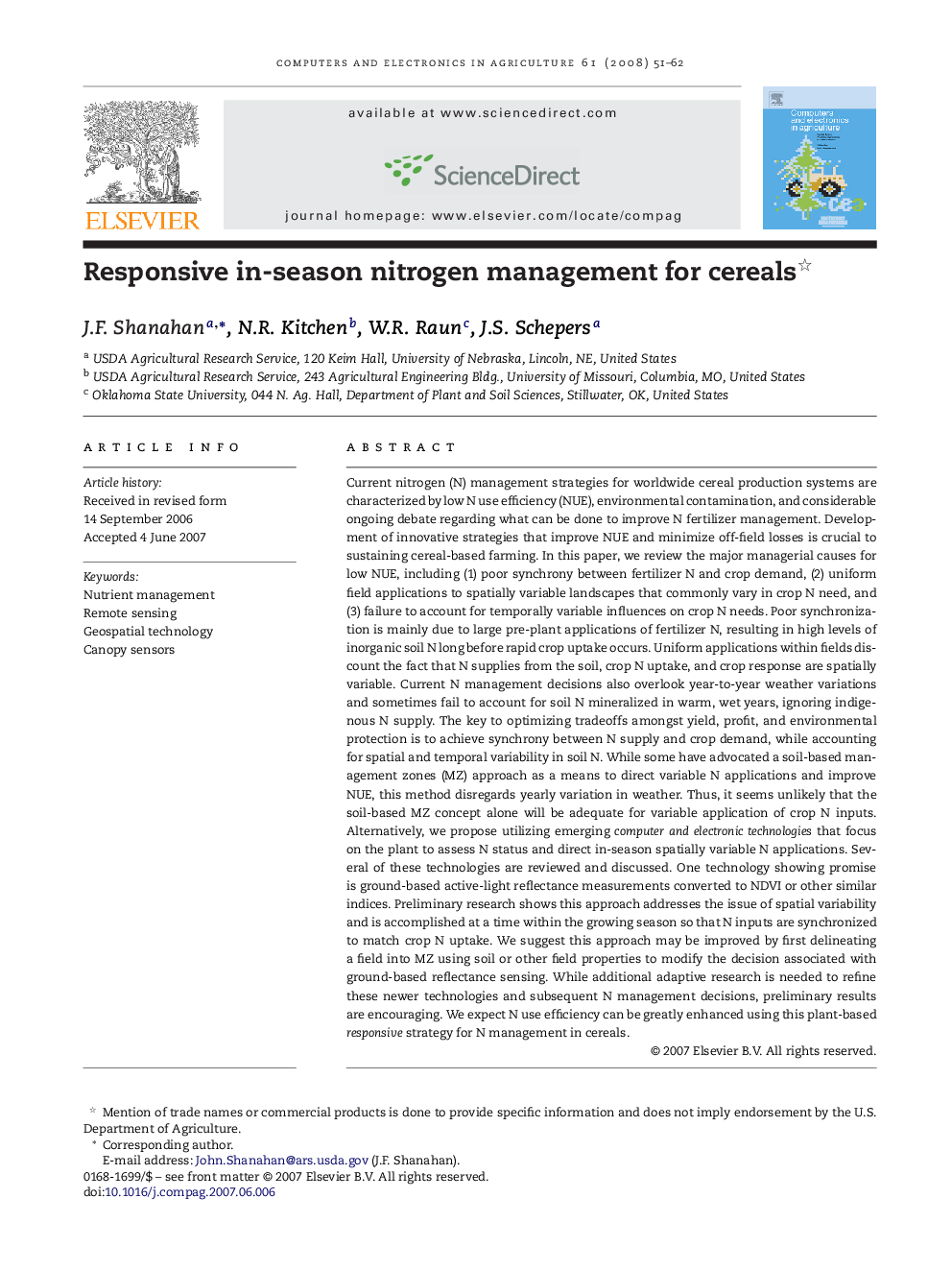| Article ID | Journal | Published Year | Pages | File Type |
|---|---|---|---|---|
| 85228 | Computers and Electronics in Agriculture | 2008 | 12 Pages |
Current nitrogen (N) management strategies for worldwide cereal production systems are characterized by low N use efficiency (NUE), environmental contamination, and considerable ongoing debate regarding what can be done to improve N fertilizer management. Development of innovative strategies that improve NUE and minimize off-field losses is crucial to sustaining cereal-based farming. In this paper, we review the major managerial causes for low NUE, including (1) poor synchrony between fertilizer N and crop demand, (2) uniform field applications to spatially variable landscapes that commonly vary in crop N need, and (3) failure to account for temporally variable influences on crop N needs. Poor synchronization is mainly due to large pre-plant applications of fertilizer N, resulting in high levels of inorganic soil N long before rapid crop uptake occurs. Uniform applications within fields discount the fact that N supplies from the soil, crop N uptake, and crop response are spatially variable. Current N management decisions also overlook year-to-year weather variations and sometimes fail to account for soil N mineralized in warm, wet years, ignoring indigenous N supply. The key to optimizing tradeoffs amongst yield, profit, and environmental protection is to achieve synchrony between N supply and crop demand, while accounting for spatial and temporal variability in soil N. While some have advocated a soil-based management zones (MZ) approach as a means to direct variable N applications and improve NUE, this method disregards yearly variation in weather. Thus, it seems unlikely that the soil-based MZ concept alone will be adequate for variable application of crop N inputs. Alternatively, we propose utilizing emerging computer and electronic technologies that focus on the plant to assess N status and direct in-season spatially variable N applications. Several of these technologies are reviewed and discussed. One technology showing promise is ground-based active-light reflectance measurements converted to NDVI or other similar indices. Preliminary research shows this approach addresses the issue of spatial variability and is accomplished at a time within the growing season so that N inputs are synchronized to match crop N uptake. We suggest this approach may be improved by first delineating a field into MZ using soil or other field properties to modify the decision associated with ground-based reflectance sensing. While additional adaptive research is needed to refine these newer technologies and subsequent N management decisions, preliminary results are encouraging. We expect N use efficiency can be greatly enhanced using this plant-based responsive strategy for N management in cereals.
